Ce contenu n'est pas disponible en français
Journey Through Mauritius’ Rich History
Mauritius, known officially as the Republic of Mauritius, is an island nation located off the southeast coast of the African continent in the Indian Ocean. It is a volcanic island of lagoons and palm-fringed beaches with coral reefs surrounding most of the coastline.
Mauritius is known as a plural society where all the ethnic groups such as Hindus, Muslims, Creoles, Chinese, and Europeans live in peace, and where all the ancestral cultures have been preserved. These features make the island a unique place in the world, and the Mauritians are known for their tolerance and kindness towards all people.
Between the 16th and 19th century, the island was ruled by the Dutch, French, and British. There are many well preserved historical places in Mauritius, which will help you understand the origins of the different cultures prevailing on the island as well as its history.
Here are the best ten historical & heritage sites to visit while in Mauritius.
1. La Citadelle Port Louis (Fort Adelaïde)
La Citadelle de Port Louis, also known as Le Fort Adelaïde, was built on a strategic location on the higher lands of Port Louis at 240 feet above sea level. The British started the construction of this fortress in 1832 in fear of a civil war from the remaining French settlers on the island and also for the purpose of guarding the harbour against enemy attacks. A ride uphill to Fort Adelaide guarantees breathtaking views of Port Louis and of the mountain range surrounding Port Louis.
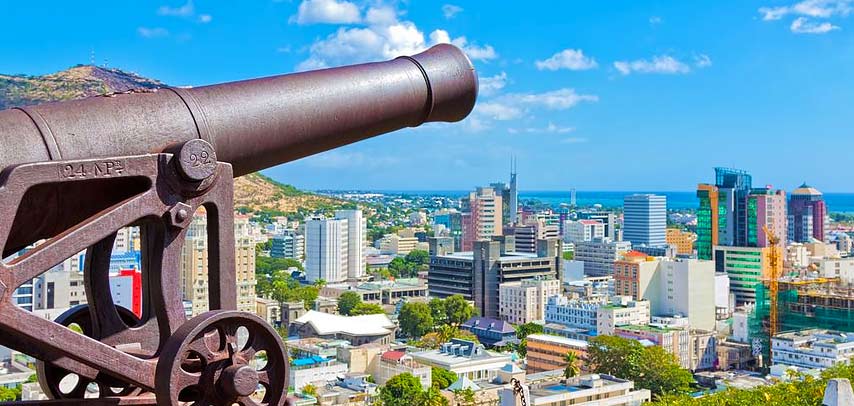
Completed in 1840, Fort Adelaïde was never used for military or police purposes as tensions had already lessened. The Citadel of Port-Louis nevertheless remains one of the rare witnesses of the transition period between the abolition of slavery and the arrival of the indentured labourers. The fort is named in honour of Adelaïde, wife of King William IV of England, whose initials and crown are carved into the stone of the entrance pediment.
To build the Fort Adelaïde, the government initially turned to apprentices, freed slaves, prisoners, and even a few soldiers. However, the lack of skilled labour forced the recruitment in 1837 of stonemasons, masons, labourers, and other free artisans from India to complete the construction of the fort. The Citadel is considered a symbol linked to the start of Indian immigration and the end of slavery.
Location: Port Louis
Operating Hours:
- Monday - Friday: 07:00 - 16:00
- Saturday & Sunday: Closed
You can visit La Citadelle through the following packages:
2. Château de Labourdonnais
Built in 1859 in the North of Mauritius, the Château de Labourdonnais, a sugar estate of the 19th century offers a long journey in the past. Contrary to what its name might suggest, it was not the home of the French naval officer Mahé de Labourdonnais and the name was actually given by the progeny of Jacques de Chasteigner Du Mee.
Restored with respect for the art and architecture of that time, the Château de Labourdonnais offers an immersion in a multi-faceted estate. Discover the story of the time, both through illustrations on the island and its sugar industry and through the experience of the place and its occupants. The tour includes a museum that holds treasures of the 19th century.
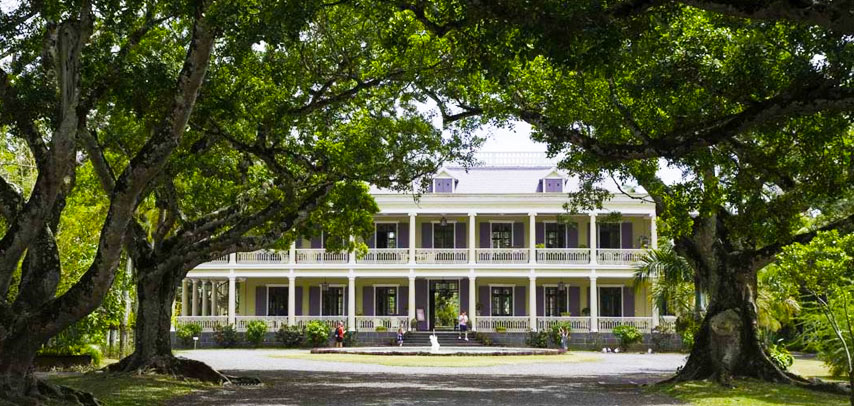
Visiting the estate does not stop at the castle, you will also discover the garden, the restaurant - La Table du Château, and the Distillery of Labourdonnais. You will find a wide variety of decorative trees and other types of plants but especially clove, nutmeg and fruit trees - sapote, wax apple, plum, apple, and mango. Known for its local rum and fruity products (ice creams, juices, jams, marmalades, fruit pastes), the tasting bar and restaurant offer a relaxing time after visiting the castle.
The castle has not lost its former glory and remains today a meeting place for those who are curious about the history and heritage of Mauritius.
Location: Mapou
Operating Hours:
- Monday - Sunday: 09:00 - 16:00
3. Sugar Museum and Factory (L’Aventure du Sucre)
Once lusted after as much as gold, sugar has enjoyed an extraordinary existence, leaving a profound impression on the history and identity of Mauritius. Located in the north of the island, the Beau Plan sugar mill has a trail that will tell you over 250 years of history of the whole island.
The adventure starts behind the facade of the factory building, with tales woven around the life story of sugar, which for a long period of time has been the main product of Mauritius. You will then visit the enormous factory, its decade-old machines decked with a thousand lights.
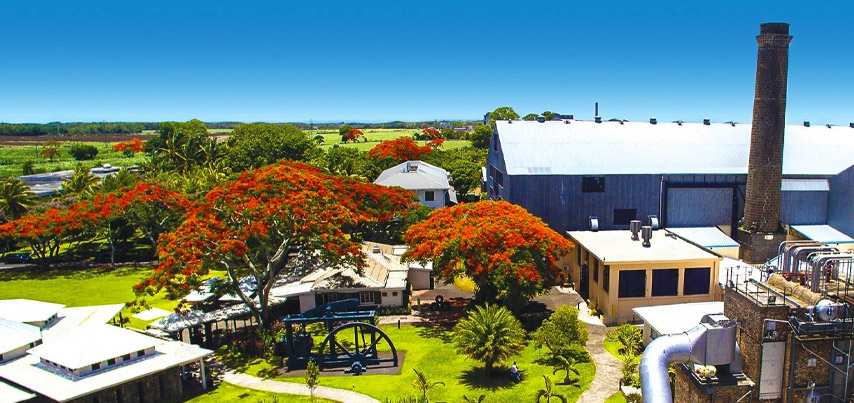
A sugarcane hedge leads the way to the fully restored and converted sugar factory where films evoking the early years of Mauritius appear on giant screens. The factory was used until the 1970s to transport sacks of sugar in the port. Today you can see how the docks used to be in those times and discover their importance to Mauritius.
Sugar Museum And Factory adventure is suitable for all ages and it has been conceived to be of interest for both international visitors, as well as for the locals. The tour of the old sugar mill, which has been transformed into a modern museum, lasts about 1:30 hours. At the end of the tour, delightful sugar and rum tastings await the visitors. The museum can be visited as a sole activity or as part of the packages.
Location: Pamplemousses
Operating Hours:
- Monday - Sunday: 10:00 - 16:00
You can visit The Sugar Museum and Factory through the following packages:
4. Bois Cheri Tea Museum & Factory
If you love tea and nature, this is one of those tours you should not miss. Bois Chéri is the first tea plantation in Mauritius dates back to 1892. The plantation is just a short distance from the museum and the main factory. It is located in a scenic natural setting with the surroundings of lush greenery. The background brings some quiet relaxation and peace of mind.
A guide will lead you through the factory and the tea plantation, offering you to discover the history, stories, and tales of the Bois Chéri and the importance of tea productions in Mauritius. After the guided tour of the tea factory, you will be visiting the tea production museum where you will learn more about the history of tea in Mauritius.
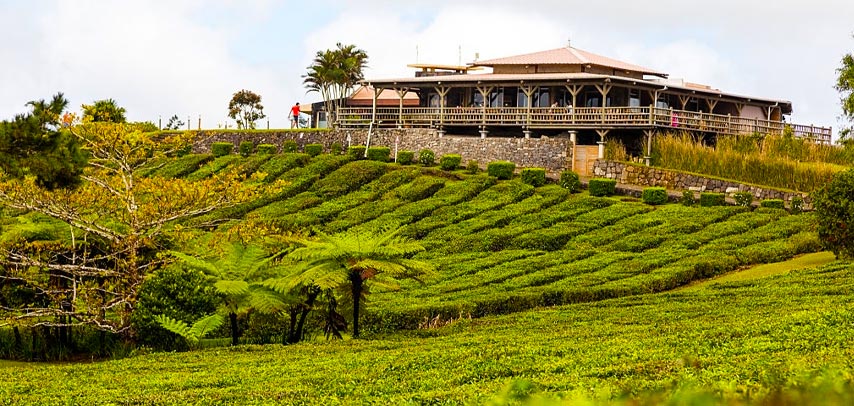
The museum is small but you will find the display of some older machines used earlier for tea production and lots of information on the Mauritian tea history. Some of the machinery you will be shown includes an old locomotive train. Before Mauritius gained independence, the British were moving goods and passengers around using rails. After Mauritius got its independence in 1968, the founders of Bois Cheri bought the F4268 locomotive which is now used as a boiler.
After a walk around the museum and the factory, you can go for tea tasting. Nowadays Bois Chéri produces a new range of flavoured teas, green teas and herbal teas. You may taste them during your visit, while enjoying a great panoramic view of the beautiful south of the island.
Location: Bois Cheri
Operating Hours:
- Monday - Saturday: 09:00 - 17:00
- Sunday: Closed
You can book your visit to Bois Cheri Tea Museum & Factory through the following packages:
5. Aapravasi Ghat - UNESCO World Heritage Centre
Located in the north at Trou Fanfaron, next to the port enclosure, Aapravasi Ghat is one of two Mauritian sites listed as a UNESCO World Heritage Site. Originally called Coolie Ghat or Immigration Square, the site was renamed to Aapravasi Ghat in 2001- which in Sanskrit means "shore / immigration depot". Due to its geographical position, Mauritius has been, for a long time, the hub of global immigration to the other colonies.
The initial stage of the visit, the archaeological remains, and the dynamic presentations allow a comprehensive understanding of the site and its heritage. Shore of a new land and a new destiny, Aapravasi Ghat remains above all a place celebrating the memory of our ancestors.
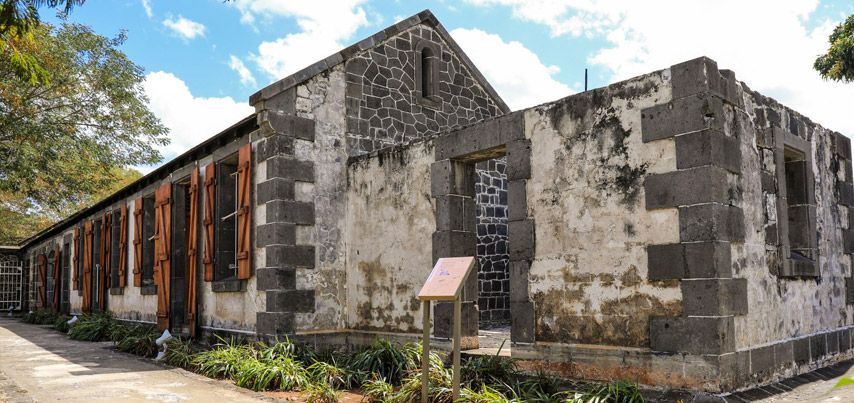
Less than half of what was once Immigration Square remains; the most symbolic elements of the structure have nevertheless been preserved, such as accommodation, the old hospital, but above all the 14 steps that all immigrants had to climb when they disembarked on the island. Documents attesting to the passage of immigrants, identification photos, origin, place of birth, caste, length of contract, salary, accommodation, and other information were kept for a while. It was following Cyclone Carol in 1960 that the archives were transferred. They are now under the responsibility of the Mahatma Gandhi Institute in Moka.
Location: Port Louis
Operating Hours:
- Monday - Friday: 09:00 - 16:00
- Saturday: 09:00 - 12:00
- Sunday: Closed
Visit the Aapravasi Ghat - UNESCO World Heritage Centre
6. Eureka House
Eureka House is a unique Creole house built in 1830. It is located in Moka. It is an elegant Creole residence originally owned by British and French aristocrats in the 19th century. It is reputed to be one of the largest houses on the island, with 109 doors and windows.
In 1986, the Eureka house was restored and opened to the public as a museum. The visit of the Eureka Mansion and its grounds provides an intriguing glimpse into colonial life. The house is filled with antiques as well as an exceptional garden surrounded by waterfalls of the Moka River. The house is constructed largely of wood, wrapped around by a long, shady veranda. The yard consists of a curious mix of English-style garden and the natural Mauritian plant life, including mango trees and palms, a waterfall and an.
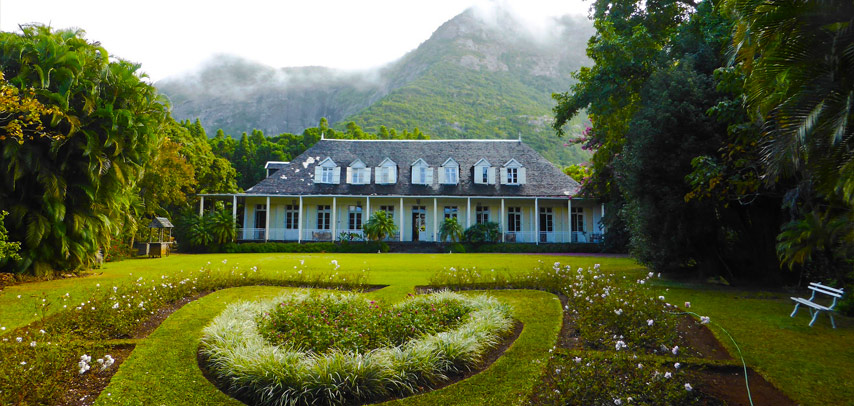
The museum has areas which are dedicated to music, art, antique maps, Chinese and Indian housewares and quirky contraptions like a colonial-era shower. You will have a tour of the house and its beautiful gardens.
Location: Moka
Operating Hours:
- Monday - Saturday: 09:00 - 17:00
- Sunday: 09:00 - 15:00
You can visit the Eureka through the following packages:
7. Blue Penny Museum
The Blue Penny Museum is an art and history museum located in the capital Port Louis and within Le Caudan Waterfront shopping complex. Constructed almost two decades ago in 2001, the museum is designed with incredible attention to quality which is obvious from the works on display and the detailed descriptions accompanying them.
You can discover is the history of maritime in the Indian Ocean and have an overview of the three different colonial periods that the island had experienced. Witness Port Louis in the 18th and 19th centuries and the history of postal services, with the very first postage stamps to be issued in Mauritius. The tour of the museum ends with the beautiful yet tragic story of a mythical couple, Paul and Virginie. It is a fantastic place to view statues, vintage coins, and stamps related to Mauritius including the orange-red one penny as well as additional art exhibits from local artists.
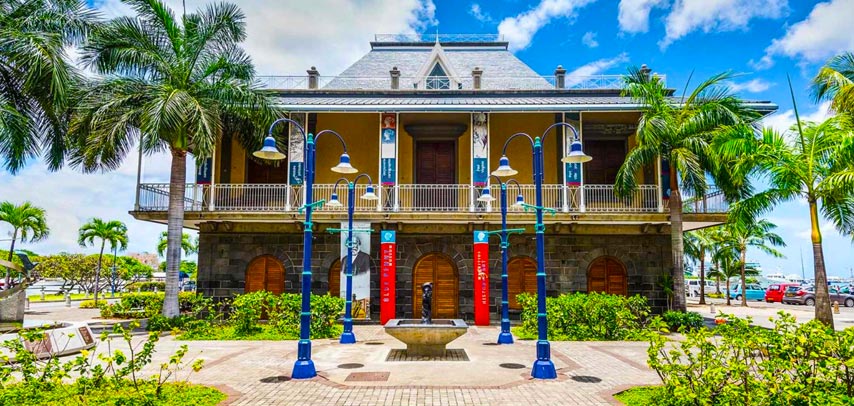
It takes around 45 minutes to an hour to do a complete tour of the museum. There is also an option for 'Privilege Visit' which includes a cocktail reception and tailored guided tours adapted to the visitor's needs. History fanatics can choose the 'Expert Visit' option for a guided in-depth tour focusing on specific parts of the exhibits.
The best way to discover this museum is by taking one of the packages that include a tour of the capital.
Location: Port Louis
Operating Hours:
- Monday - Saturday: 10:00 - 16:30
- Sunday: Closed
You can book your visit to the Blue Penny Museum via the following packages:
8. Mahebourg Historical Naval Museum
The National History Museum, located in Mahebourg, provides an overview of Mauritius history & colonisation by the Portuguese starting from the 16th century, Dutch, the French and finally by the British in the 19th century. Constructed in a 17th century French house, the museum itself is a national monument.
The first floor features the Dutch, French and the Anglo-French wars sections.You will also be able to view some old maps of the Indian Ocean as well as of Mauritius created by the Dutch. Find some rare blue and white Chinese porcelains originated from the Ming Dynasty (Wan Li 1575 - 1620) and many other items collected from a pirate shipwreck that took place at Grand River South East on 07th January 1702.
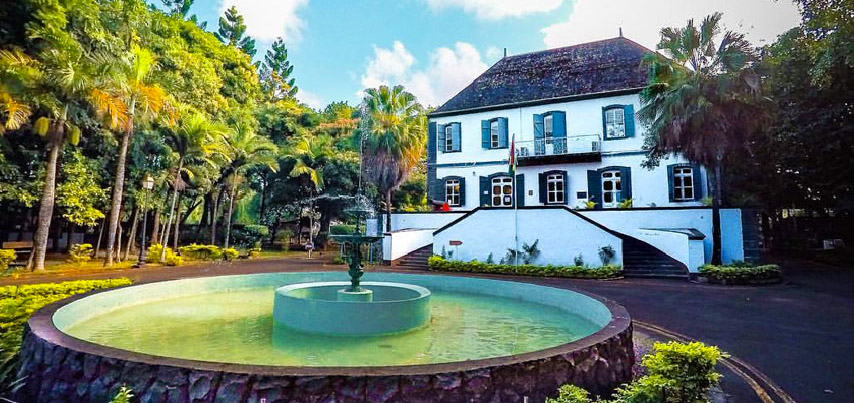
There is another room which displays the French era and here you will be able to view ancient maps, paintings of prominent French officials, and even the bed of Mahé de Labourdonnais, the French Governor who once ruled over Mauritius and Reunion Island. You will have the chance to see the famous bronze bell from the shipwreck of the Saint-Géran in 1744 and colourful illustrations on the story of Paul & Virginie.
Discover objects pertaining to corsairs and the Naval Battle of Grand Port as well as a permanent gallery on the British period of Mauritius (from 1810 up to the end of the 19th century). It tells the story of the transformation of the seaport economy into a land-based agricultural economy, along with an overview of the slavery, indentured labour, the Indian immigration and on the general arrival of other cultures in Mauritius.
Recently few new items were introduced to the museum including a train carriage and a replica of Napoleon’s boat which was used in one of his historic battles against the English. The museum is on 2 floors and both contain a wide variety of displays.
Location: Port Louis
Operating Hours:
- Monday - Friday: 09:00 - 16:00
- Saturday: 09:00 - 12:00
- Sunday: Closed
9. The Natural History Museum
Located near the gardens of the East India Company, the Natural History Museum of Port-Louis exhibits some of the impressive fauna of Mauritius and nearby islands.There are more than 3,000 historic specimens on display. These creatures lived on land, in the ocean or in the skies and they are of all shapes and sizes.
On display, you can find various bird species originating from the nearby region and some other animals which are now extinct e.g Giant Mauritian Lizard, considered the largest lizard in the world and of course the famous Dodo, Mauritius’ national symbol. Discover some videos about excavations of Dodo bones, some of which are also exhibited at the gallery. You will also get to view a skeleton of the national bird of Rodrigues, The Solitaire, which also became extinct at the end of the 18th century.
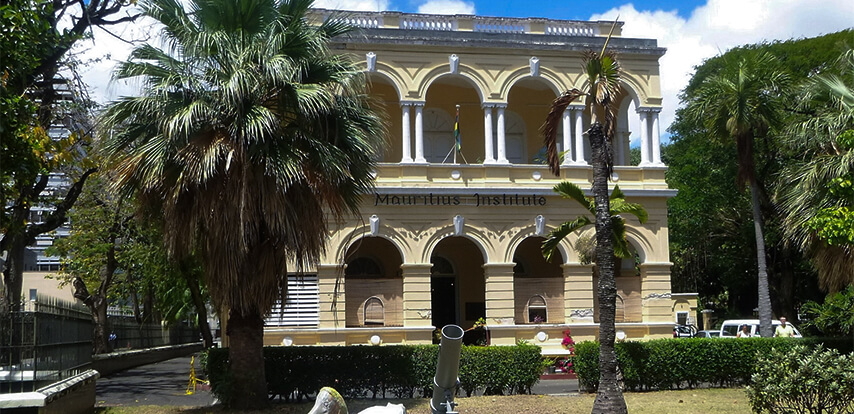
Another gallery is dedicated to marine life and species. There you will see an impressive collection of seashells, including the giant clamshell which weighs about 70 kilograms. You will see many fish species and some massive models of sharks.
Location: Port Louis
Operating Hours:
- Monday, Tuesday, Thursday & Friday: 09:00 - 16:00
- Wednesday: 11:00-16:00
- Saturday: 09:00 - 12:00
- Sunday: Closed
10. Domaine De Saint Aubin
Located in the South of Mauritius, Domaine De Saint Aubin, is a few kilometres away from Souillac. This sugar estate dates from the beginning of the 19th century, when the roads were impractical and sugar had to be transported to the capital of the island by means of the sailboats from the Souillac port.
The estate house is a beautiful colonial mansion that was built with wood from demolished ships. The remains of these ancient ships can still be seen at the staircase, the frame of the attic and the roof is made of an old boat structure. Nowadays, the attic has been converted into a small gallery where you can find antique furniture, old photographs of the estate and various signs detailing the history of Mauritius and maritime trade.
The house has been converted into a table d'hôte offering traditional dishes using products from the estate's plantations. Comfortably seated under the veranda or in the lounges, visitors can enjoy some famous Mauritian delicacies.
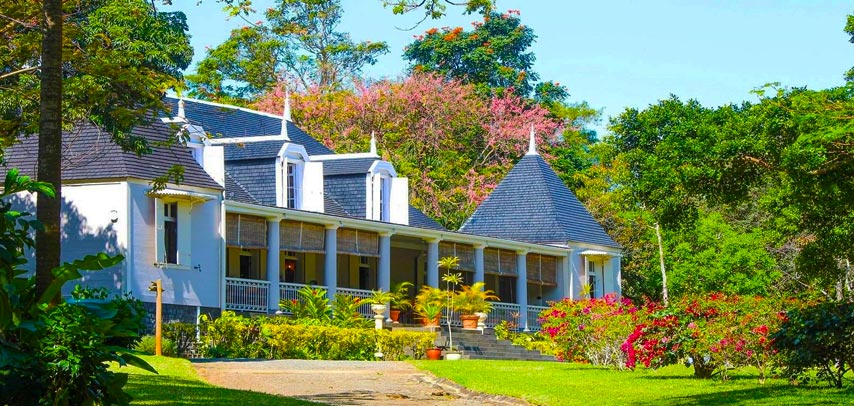
The estate remains known for its agricultural rum, Saint Aubin 1819. La Maison du Rhum, the small artisanal factory, allows visitors to fully appreciate the preparation of this traditional rum, from the first agricultural distillery on the island. Made from fangourin (cane juice) and aged in oak barrels, this rum is available in various flavours - spices, coffee, vanilla or traditional white rum.
Location: St Aubin
Operating Hours:
- Monday - Sunday: 09:00 - 17:00
Visit & Tour of Saint Aubin House
The history of the small island nation of Mauritius is very fascinating. By visiting these Historical & Heritage sites, visitors will get a greater insight of the history of the island as well as about the origins of the inhabitants of Mauritius.
Tailor Made - Mauritius Historical & Heritage site:
You may also create your own Tailor Made Tour and visit any of Mauritius Historical & Heritage site of your choice by using this link.























































